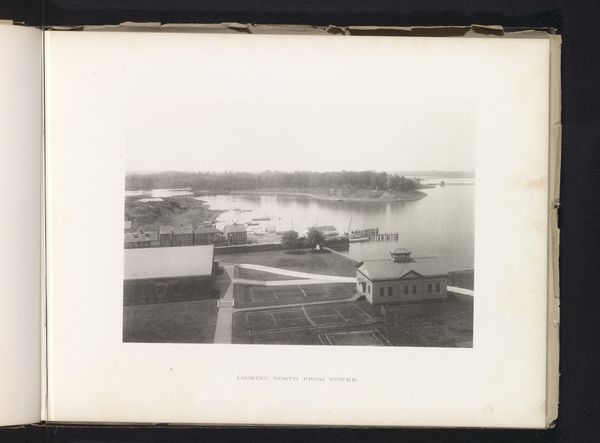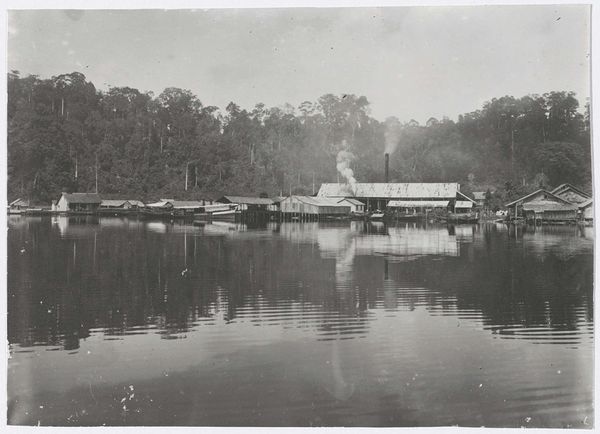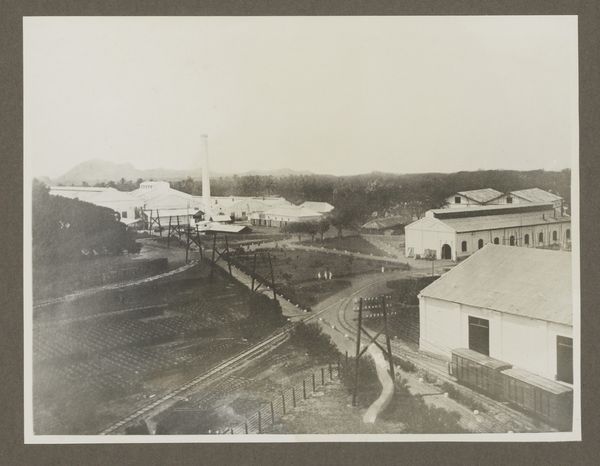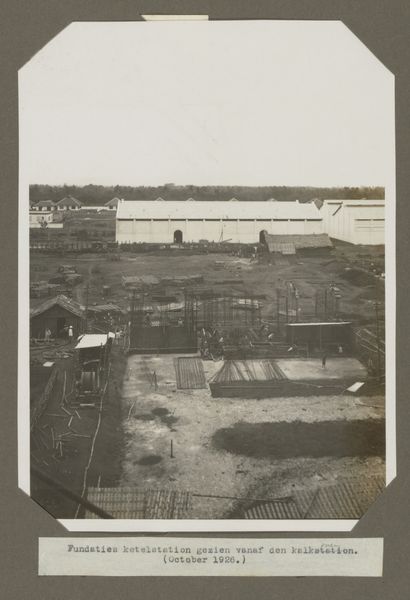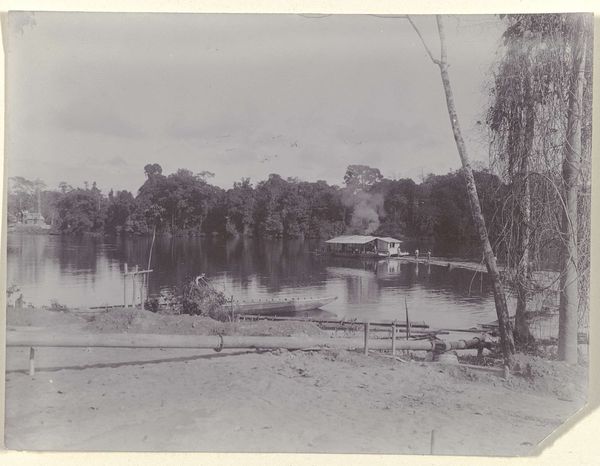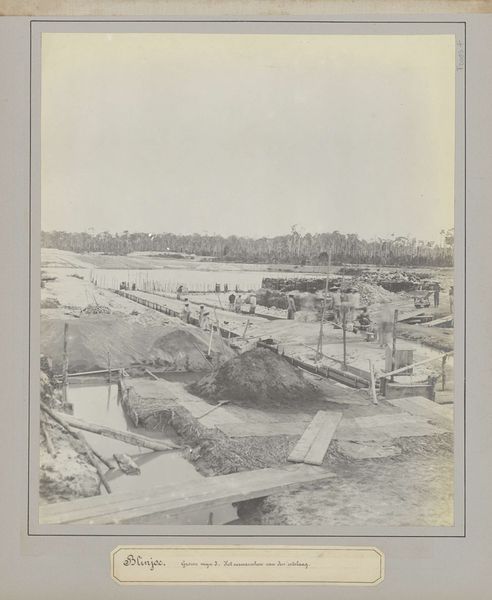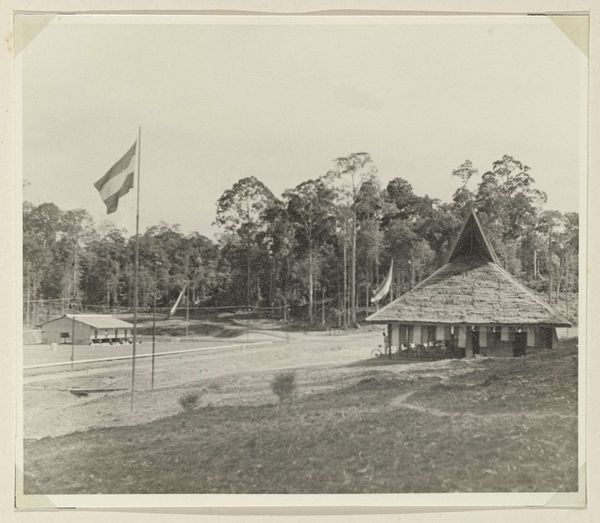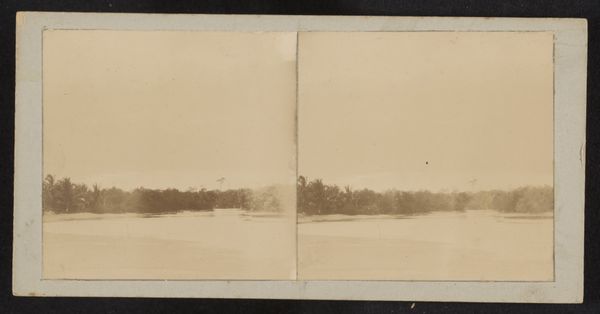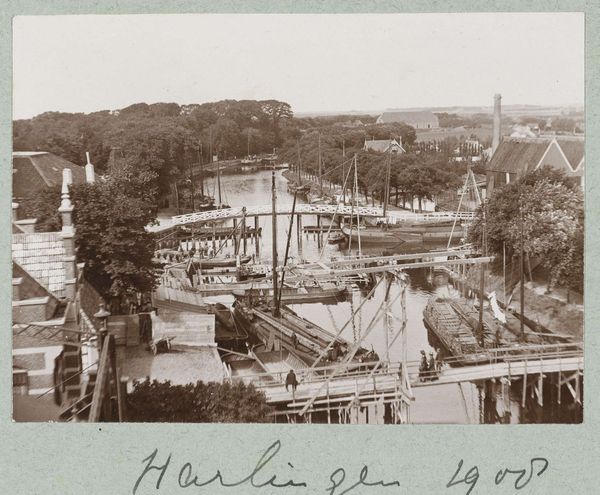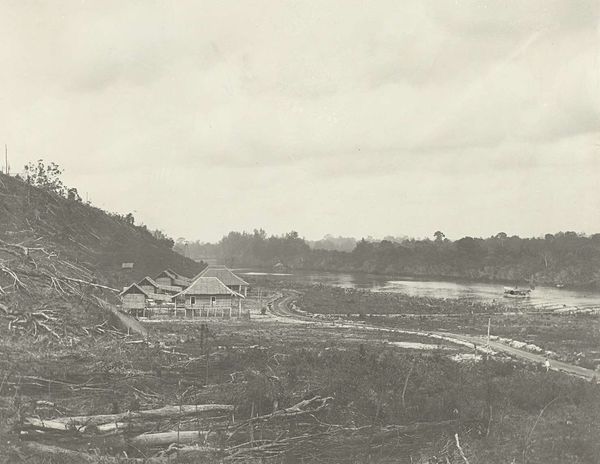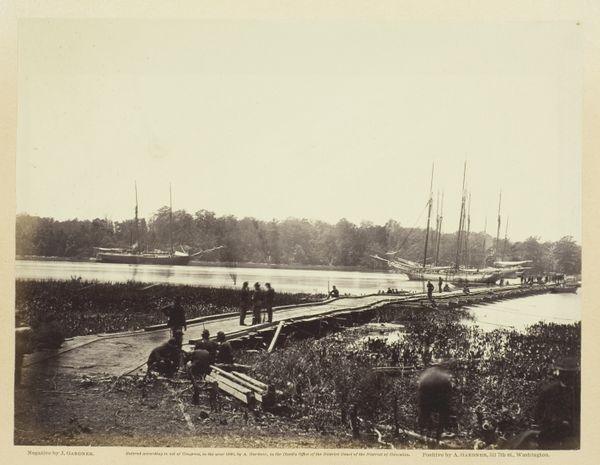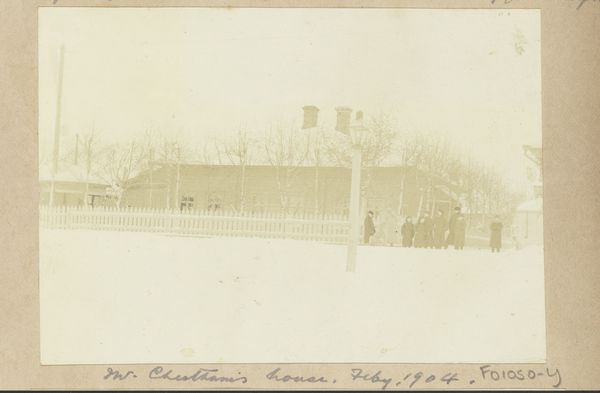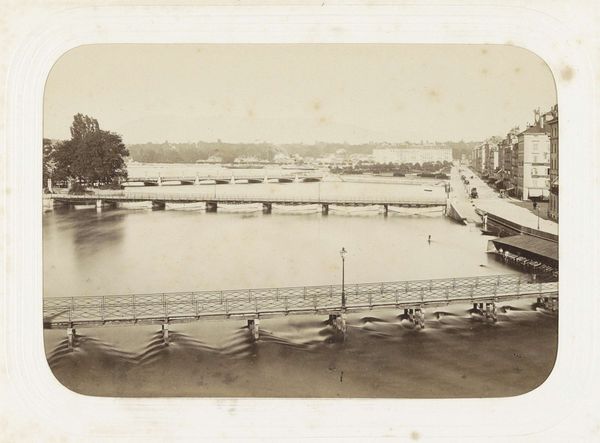
Gezicht op Sandelwerf (?), Tandjong Poera, Langkat Sumatra c. 1900 - 1905
0:00
0:00
heinrichernstco
Rijksmuseum
print, photography
# print
#
landscape
#
photography
#
orientalism
Dimensions: height 224 mm, width 305 mm
Copyright: Rijks Museum: Open Domain
Editor: Here we have a photograph entitled "Gezicht op Sandelwerf (?), Tandjong Poera, Langkat Sumatra" created around 1900-1905 by Heinrich Ernst & Co. It looks like a print of a photograph depicting some sort of industrial site along a riverbank. There's a definite feeling of colonial presence, especially seeing that steamboat. What jumps out to you when you look at it? Curator: What interests me is understanding this image as a document of resource extraction and labor. The composition leads our eye to the materials – likely timber given the title – being processed and shipped out. Consider the means of production visible here: the infrastructure, the steamship... These details reveal a complex system reliant on both human labor and industrial technology to exploit natural resources. What can we infer about the conditions of that labor, and where do we think those raw materials are headed? Editor: It definitely feels like this photo is normalizing resource extraction; kind of celebrating it even. The framing positions the Sandelwerf as a functional, almost picturesque part of the landscape. But is there anything disruptive about this image? Curator: Perhaps the very presence of the photograph itself disrupts this supposed natural order. Photography in this era often served to inventory and document colonial possessions, framing them within a European gaze. The photograph becomes a tool of control and consumption, reflecting the photographer's role in this colonial system. How do you think this impacts its status as art, or a historical record? Editor: That’s a good point, framing impacts meaning so much. Looking at the materials through a materialist lens really illuminates a side of colonial history that I hadn't fully considered before. Curator: Precisely. Analyzing art in relation to its materiality helps us unravel the often-hidden socio-economic and political forces shaping its creation and consumption. It encourages us to critically assess what materials are celebrated, whose labor is valued (or ignored), and what narratives are promoted through the art object.
Comments
No comments
Be the first to comment and join the conversation on the ultimate creative platform.
